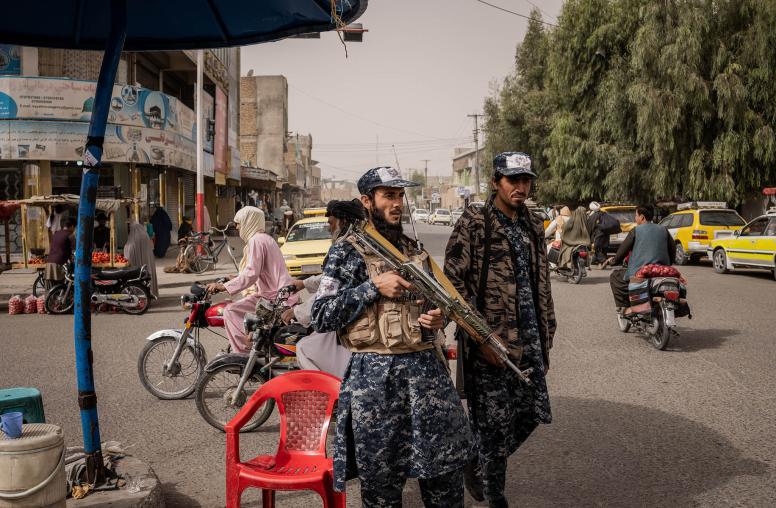Event Wrap: Making Peace in Afghanistan
More than a year into the “surge” of American and international military forces in Afghanistan, there are only mixed results on the ground, say experts. And that, they say, begs the question – who is helping to build the political process on which a final, peaceful resolution can be reached?
February 18, 2011
AFGHANISTAN: IS THERE A POLITICAL SOLUTION? – More than a year into the “surge” of American and international military forces in Afghanistan, there are only mixed results on the ground, say experts. And that, they say, begs the question – who is helping to build the political process on which a final, peaceful resolution can be reached? What will that process look like and how can its results be “durable?” Experts who gathered at USIP Feb. 18 pondered the questions. Minna Jarvenpaa, former head of analysis and planning at the United Nations Assistance Mission in Afghanistan, said the answer to the question of how to resolve the conflict in Afghanistan has changed. Six years ago, the military solution looked like a winner. “In 2005, I would have argued it’s strategic patience – we have to stay the course, which may still be correct,” she said. Today, it’s different. “What is missing is a political strategy.”
WHAT THE TALIBAN WANTS – Experts at the USIP conference generally agreed that the presence of foreign forces and the Afghan government’s own inability to curb corruption and provide services for its own people remain barriers to political resolution. It’s far more complex than that, naturally. But any attempt to build the kind of political consensus that could lead to resolution of the nine-year-old conflict must contend with those issues, they said. Still, what the Taliban want or don’t want is largely unknown and that makes it difficult to even begin talking political reconciliation. “We don’t really know what the Taliban really thinks, it’s guesswork,” said Jarvenpaa.
A STRATEGIC DISCONNECT – If it’s unclear what the Taliban want, it’s still a bit unclear what American objectives are there. The U.S. still isn’t articulating its strategic objectives in Afghanistan, said Hamish Nixon, project coordinator at the Peace Research Institute of Oslo. So much so, some Afghan officials mistakenly think the American military is actually working closely with the Taliban in order to justify its continued presence in Afghanistan. “There is a huge communications gap, regardless of what the strategy is,” he said. “The U.S. should communicate more directly to the Afghan people…” he said. The U.S., Nixon says, must become seriously engaged in political negotiation “and be very clear about its positions and goals,” Nixon said. USIP’s Andrew Wilder agreed: “This lack of clarity on what our political objective is there … is very damaging right now.”
THE HIGH PEACE COUNCIL ROLE – The council Karzai formed last year may have trouble playing an effective role as peace broker, experts said. “There is a wide perception that the High Peace Council will have trouble playing a constructive role,” Nixon said.
WHO’S AT THE NEGOTIATING TABLE? – The U.S. has to be a dominant player in any political resolution in Afghanistan – and must demonstrate its commitment to the Taliban before insurgents will take it seriously, experts agreed.
IS POLITICAL RESOLUTION BACK BURNERED? – Maybe, says Kristian Harpviken, director of the Peace Research Institute of Oslo. Recent visits to Afghanistan show him that there is actually less interest in political dialogue. And, when 2014 emerged last year from the Lisbon conference as the new timetable for transition out of Afghanistan, it reduced the urgency for resolving the Afghanistan conflict through non-military means, he said. “I wonder if the Lisbon conference and the relaxation of the 2011 deadline has really contributed to the more lukewarm attitude for the need for a political process,” he said.
TOO MUCH PIE IN THE SKY THINKING? – As the debate turns to political reconciliation – and the ultimate withdrawal of all American and international troops by 2014 – questions emerge about the future sustainability of the Afghan force the U.S. and international partners are working so hard to build. Building the Afghan national security forces is the cornerstone of American military strategy – draw down U.S. forces as it builds up indigenous ones. But they will cost billions of dollars at a time when Congress is fretting over federal spending. “Are we creating these institutions that are completely unrealistic?” USIP’s Andrew Wilder asked.
Explore Further
- Learn more about this event
- Read more about USIP's programs in Afghanistan
- Read the Special Report, "Making Peace in Afghanistan: the Missing Political Strategy"



